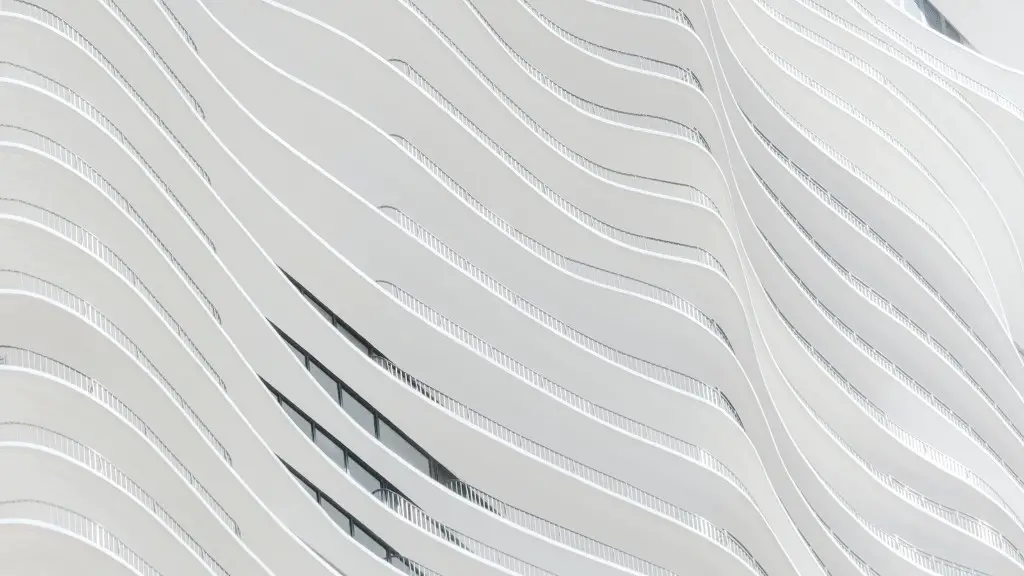Design process in architecture encompasses a wide range of disciplines and activities, from computer-aided design models and programming to goal-based problem solving and creative approaches like drawing, sketching, and model building. It is a process of continual decision-making, exploration, and learning. The different elements of the design process must be carefully managed and coordinated in order to ensure that the project will be successful, and that the desired outcomes are met.
At the core of the design process in architecture is the concept of human-centered design. This is a process in which the designer takes into account the needs, expectations, and preferences of the users of the building as they are designing it. The user’s input is taken into account, and the designer must also incorporate principles of ergonomics and aesthetics. For this reason, it is important that the designer and the user collaborate closely to understand the user’s preferences and create a design that meets their needs.
In order to create successful architectural designs, it is important to understand the principles of good design. These principles include functionality, usability, aesthetic appeal, and structural integrity. Many architects also consider sustainability in their design process, which can include energy efficiency and environmentally friendly materials. Additionally, it is important to consider the context of a building; this includes issues such as climate, local customs, and cultural values.
The importance of time management in design process
Time management is an integral part of the design process. As a designer, it is essential to be able to manage your time effectively in order to ensure that the project is completed on schedule and within budget. Proper scheduling of tasks is essential, as well as understanding the complexities of the project and planning the appropriate time for each task.
Projects often require collaboration with consultants and other stakeholders, and so it is important for the designer to be able to manage communication between the different parties in order to ensure that the project is completed successfully. Additionally, it is important to understand the project’s timeline in order to plan design meetings, reviews, and other relevant meetings.
Design process in digital architecture
Digital technologies are revolutionizing the way that design process in architecture is performed. With the advent of computer-aided design (CAD) tools like Revit and SketchUp, it is now possible for architects to rapidly produce high-quality designs with greater accuracy than ever before.
Using digital tools, architects can create detailed 3D computer-generated models of their design, as well as explore alternative design solutions with greater clarity. Furthermore, they can collaborate with other stakeholders in real-time, sharing design data and working together on projects. CAD tools can also be used to create visuals that can be used to communicate the design to others.
The benefits of collaborative design process
Collaborative design process has numerous advantages over traditional design approaches. By bringing in stakeholders at the early stages of the process, it is possible to create better outcomes as these stakeholders can provide valuable feedback that can be considered as part of the design.
In a collaborative design process, there can also be a greater level of accountability, as all stakeholders have invested in the project and have contributed their expertise to create the design. Furthermore, design process can take place in a much shorter timeframe, as the different parties are working together in real time and can make decisions quickly.
The impact of using data and analytics in design process
Data and analytics play an important role in the design process, as they can provide architects with valuable insights and allow them to make decisions with greater accuracy. Data can be used to inform decisions about materials, construction methods, aesthetic elements, and more.
Analytics can also be used to measure the performance of a building, whether it is how energy efficient the building is, or how efficient it is in terms of occupant comfort. The use of data and analytics can be hugely beneficial to the design process, allowing projects to be completed more efficiently and with greater accuracy.
Techniques for successful design process
In order to create successful designs, designers must understand the principles of good design and be able to manage their time effectively. Additionally, they must understand the context in which their design is being created, and consider both the ergonomics and aesthetics of their design.
Additionally, it is important for designers to use the appropriate tools for their project, whether it be traditional or digital. Other techniques include using brainstorming and creative problem-solving to explore different design solutions, and incorporating user feedback in order to create better outcomes.
Managing the design process in architectural firms
In the field of architecture, there are many different elements to be managed during the design process. Project managers can be especially useful in this regard, as they can help to coordinate the different tasks and ensure that the project is completed within budget and on time.
Additionally, project managers can ensure that communication between stakeholders is managed effectively, and that relevant meetings and reviews are planned and conducted correctly. They can also provide guidance and support to the team and ensure that safety regulations and other relevant considerations are being followed.
Fostering creative design process
A creative design process is essential to successful architectural projects, and there are a number of techniques that can be used to foster creativity. One method is to ensure that there is open communication within the team and that all stakeholders are encouraged to participate in the design process.
Allowing team members to experiment, explore, and innovate can also be beneficial in fostering a creative design process. Additionally, it is important to create an environment in which different perspectives and ideas are valued, and risks can be taken in order to achieve innovative outcomes.

